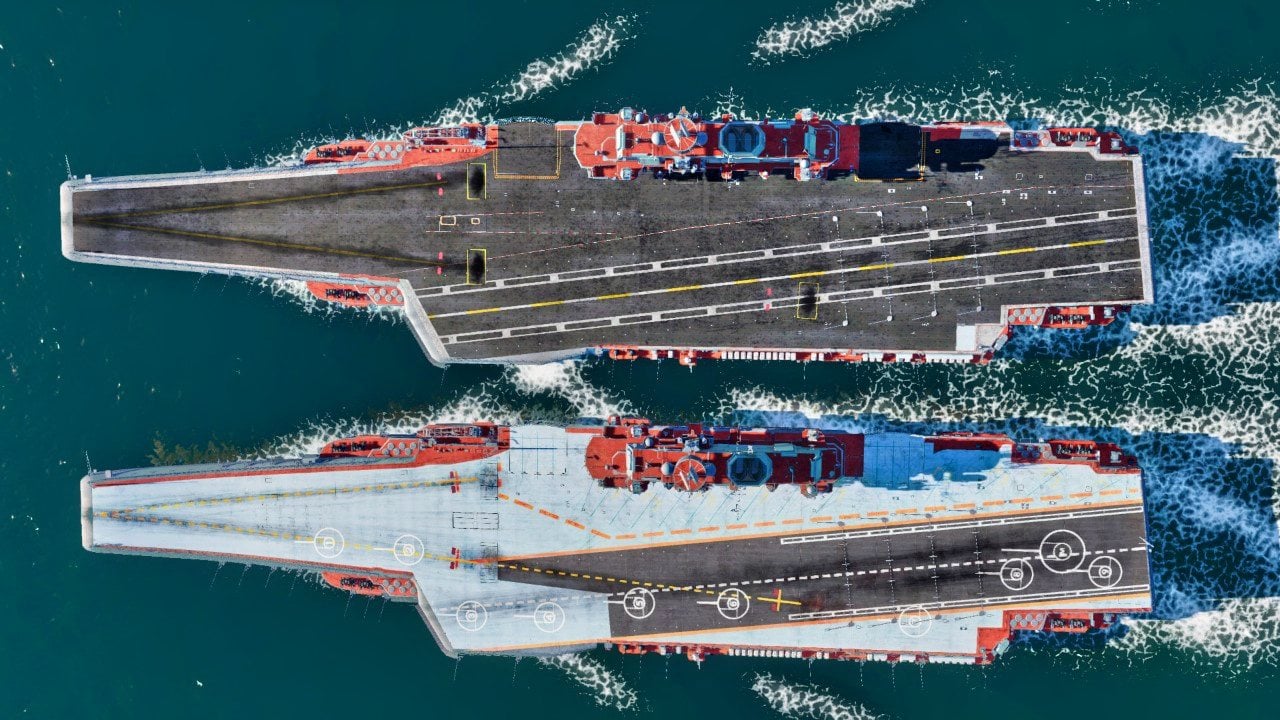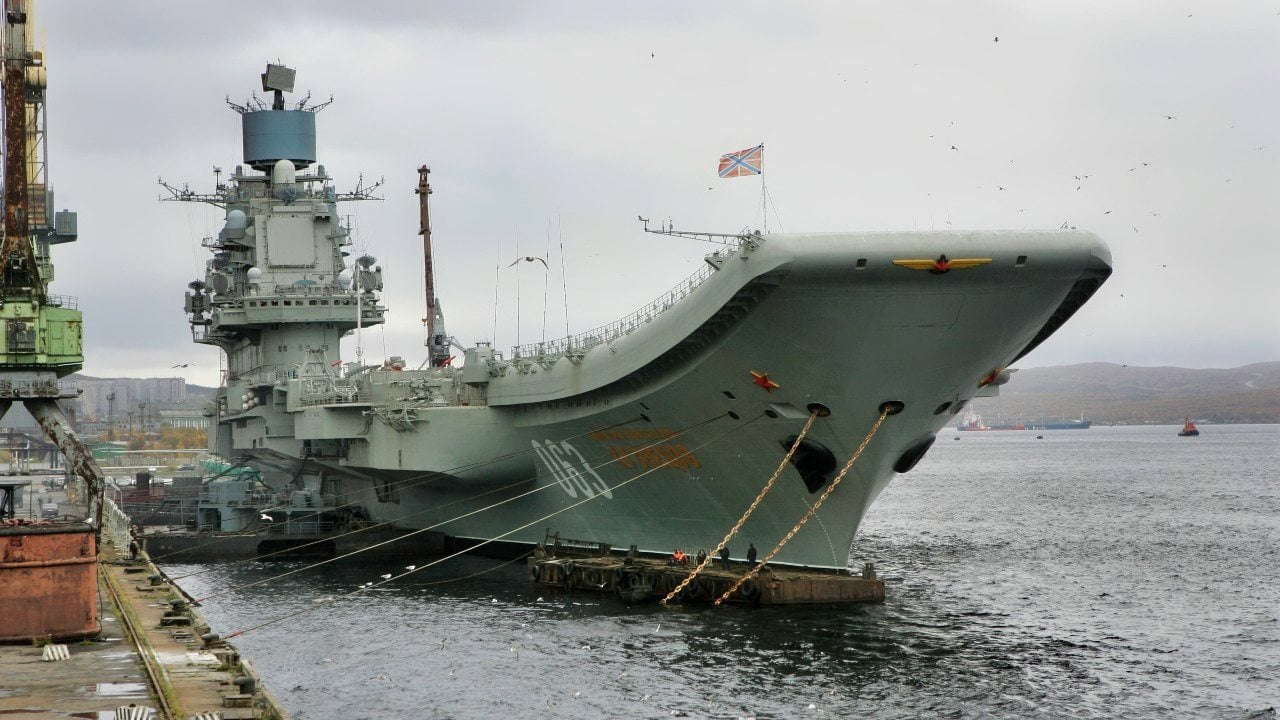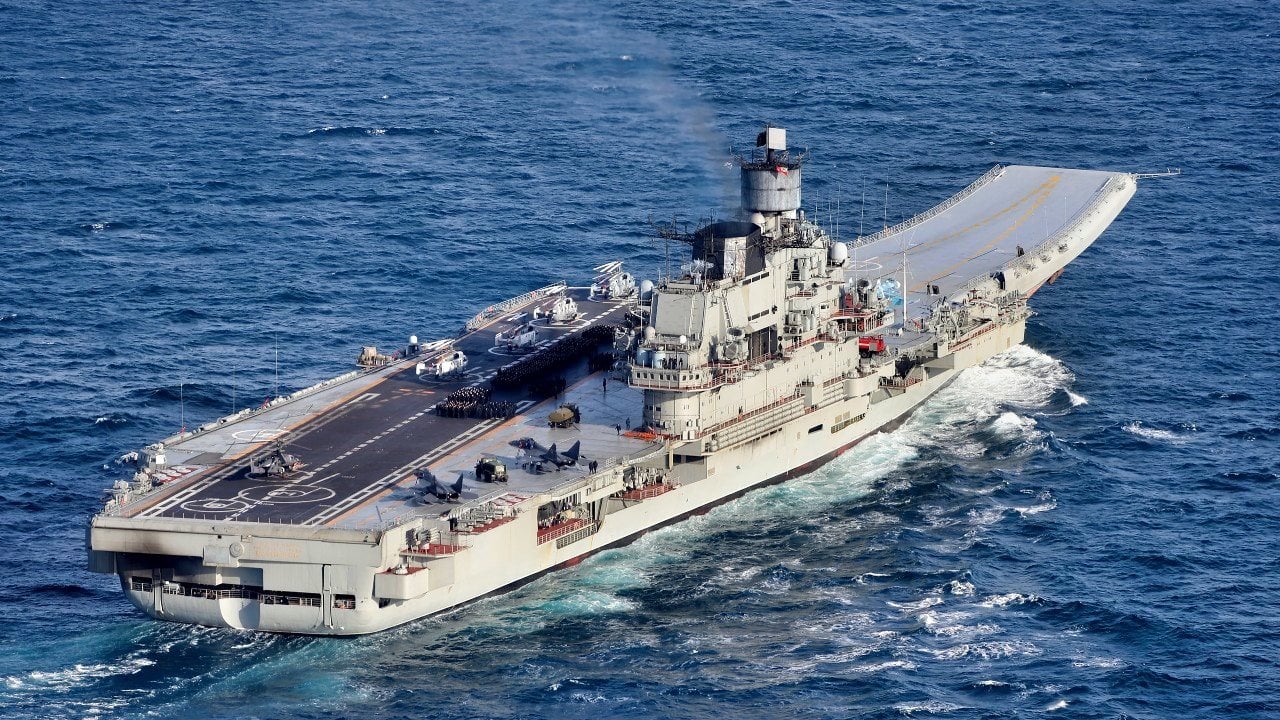Russia Wants a New Aircraft Carrier But It Won't Ever Happen
The Russian Navy's ambitions to enhance its fleet with a new aircraft carrier face significant hurdles, as evidenced by ongoing struggles with the refit of the Admiral Kuznetsov, its current flagship. Admiral Nikolay Yevmenov has expressed intentions to develop a new "prospective naval aircraft carrying complex" to boost operational effectiveness.
Summary: The Russian Navy's ambitions to enhance its fleet with a new aircraft carrier face significant hurdles, as evidenced by ongoing struggles with the refit of the Admiral Kuznetsov, its current flagship. Admiral Nikolay Yevmenov has expressed intentions to develop a new "prospective naval aircraft carrying complex" to boost operational effectiveness.

-However, the prospects for this new carrier are clouded by the technical and financial challenges seen in the extensive and problematic refit of the Kuznetsov, which has suffered from multiple accidents and delays.
-Historical attempts to develop new carriers, such as the proposed Shtorm project, have seen little progress, casting further doubt on the feasibility of Russia's plans to expand its blue-water capabilities. The idea of acquiring a carrier from China, suggested by some Russian lawmakers, underscores the difficulties Russia faces in achieving its naval ambitions without external assistance.
A few months back, the head of the Russian Navy has suggested that a new aircraft carrier could be in the works – yet, the Kremlin has struggled with the refit for its sole flattop. However, Commander-in-Chief Admiral Nikolay Yevmenov told the state-run Krasnaya Zvezda daily news outlet that plans for a new aircraft carrier are underway.
"The issue of the expediency of creating a prospective naval aircraft carrying complex has been addressed. Its engagement will increase the effectiveness of various operational tasks," suggested Yevmenov, as reported by Tass back in January.
He further suggested that the main "brown-water force" comprises warships that combine antisubmarine and attack capabilities. These include corvettes such as the Russian Navy's Steregushchy and the Gremyashchy and small missile ships like the Grad Sviyazhsk.
Blue-water warships comprise frigates, patrol ships, and universal amphibious assault ships that can provide over-the-horizon assault landing, the naval chief added. The development of minesweepers made of composite materials with modern mine searching and sweeping means will continue.

Yevmenov gave no timeline on when such a future carrier could enter service, or even where it could be built. Russia has struggled to refit the flagship Admiral Flota Sovetskogo Soyuza Kuznetsov, and during it now odyssey-long time undergoing a modernization, which involved a crane falling on the flight deck, while it further suffered multiple fires, and seen its completion date pushed back on numerous occasions.
There has been increased scrutiny, and some Western observers have doubted the carrier will ever be returned to service. The problem-plagued warship was meant to be a symbol of pride for Moscow, but it has often been the butt of numerous jokes – often with good reason. At one point, the Kremlin did consider a replacement, yet likely, the warship will never sail.
Russia Always Wants a New Aircraft Carrier to Replace Admiral Kuznetsov
Yevmenov's calls for a new carrier aren't the first time that such a project has figuratively been floated – even though no actual warship has moved past the decisions stage. As previously reported, in 2018, it was announced that the Russian Navy had begun to explore options for a new aircraft carrier.

According to GlobalSecurity.org, one option was focused on a conventionally powered vessel with a displacement of around 70,000 tons – slightly larger than the 58,600-67,500 tons full load Project 1143.5 Admiral Kuznetsov. Another option called for a nuclear-powered carrier, with a larger displacement. That would be bigger than the 42,000-ton French Navy flagship Charles de Gaulle – the only non-U.S. Navy nuclear-powered carrier – yet not likely as large as the 100,000-ton American supercarriers.
The new "Shtorm" aircraft carrier – a.k.a. Project 23000E – was to be included in Russia's armament program for the 2019 to 2025 period.
To say that little to no progress has been made on the Shtorm is a vast understatement, and there is little to no chance that Moscow will be launching a new carrier anytime in the next decade.
Old Aircraft Carrier Back From China?
It was also just a year ago that some Russian lawmakers suggested that Moscow should turn to Beijing to buy back the unfinished Soviet-era flattop that Ukraine sold to China following the dissolution of the Soviet Union.
While no official request has been made, it would also likely best be described as a dead in the water.
It seems that some in the Kremlin are like children with wish lists for Santa Claus that vastly exceed the means of their parents. They're likely to be as disappointed as those children when their dreams aren't fulfilled, but unlike children, they should understand the reality of the situation.
As it stands, Moscow will be hard-pressed to see Admiral Kuznetsov even return to service, at least as a capable warship. It is therefore simply a fantasy to believe that the Russian Navy will ever be a true blue water force with a capable aircraft carrier that isn't the mockery of the world.
Author Experience and Expertise: Peter Suciu
Peter Suciu is a Michigan-based writer. He has contributed to more than four dozen magazines, newspapers, and websites with over 3,200 published pieces over a twenty-year career in journalism. He regularly writes about military hardware, firearms history, cybersecurity, politics, and international affairs. Peter is also a Contributing Writer for Forbes and Clearance Jobs. You can follow him on Twitter: @PeterSuciu. You can email the author: [email protected].
Image Credit: Shutterstock and Creative Commons.


